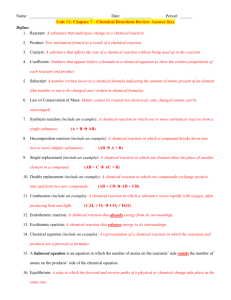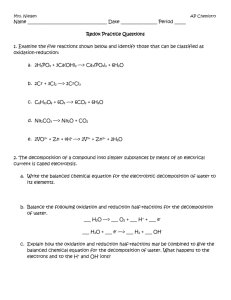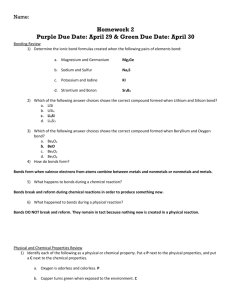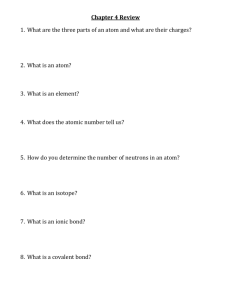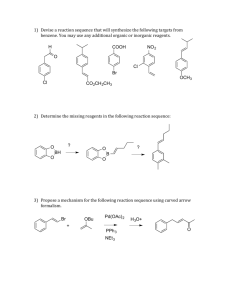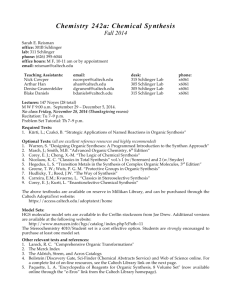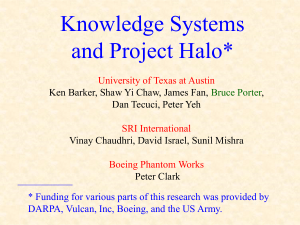Chemical Change
advertisement
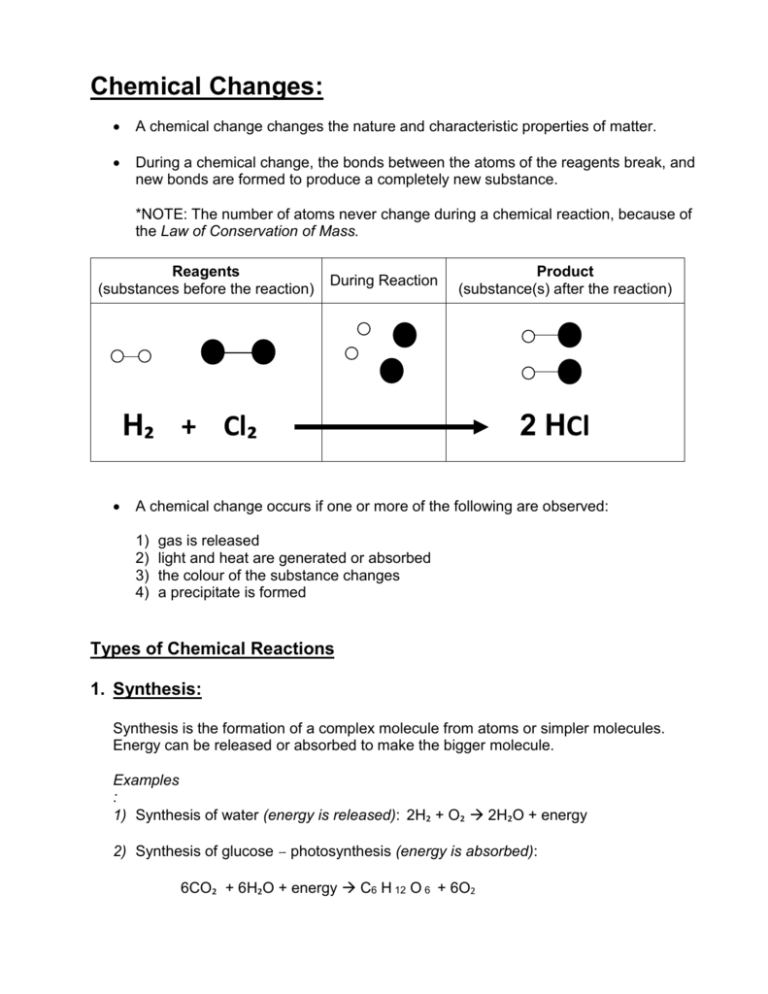
Chemical Changes: A chemical change changes the nature and characteristic properties of matter. During a chemical change, the bonds between the atoms of the reagents break, and new bonds are formed to produce a completely new substance. *NOTE: The number of atoms never change during a chemical reaction, because of the Law of Conservation of Mass. Reagents (substances before the reaction) During Reaction Product (substance(s) after the reaction) H₂ + Cl₂ 2 HCl A chemical change occurs if one or more of the following are observed: 1) 2) 3) 4) gas is released light and heat are generated or absorbed the colour of the substance changes a precipitate is formed Types of Chemical Reactions 1. Synthesis: Synthesis is the formation of a complex molecule from atoms or simpler molecules. Energy can be released or absorbed to make the bigger molecule. Examples : 1) Synthesis of water (energy is released): 2H₂ + O₂ 2H₂O + energy 2) Synthesis of glucose – photosynthesis (energy is absorbed): 6CO₂ + 6H₂O + energy C6 H 12 O 6 + 6O2 2. Decomposition: Decomposition is the opposite of synthesis, meaning the bonds of the complex molecule are broken and atoms or smaller molecules are formed. During decomposition energy is usually released and transformed into other forms of energy, but some require energy Example: 1) Decomposition of water – electrolysis (energy is absorbed): 2H₂O + electrical energy 2H₂ + O₂ 3. Oxidation: Oxidation is a chemical reaction that involves oxygen or a substance that has similar properties to oxygen, like sulphur, chlorine and fluoride. Oxidation usually releases energy. Examples: 1) Combustion (like fires) release energy. 2) Bananas and apples turning brown because of oxidation. 3) Metal, such as iron, forming rust: 4 Fe + 3 O2 2 Fe2O3 + energy (iron) (iron oxide or rust) 4) Cellular respiration (the reverse of photosynthesis): oxidation of glucose in our body causes the bonds to rearrange, releasing stored chemical energy. The energy helps us to keep our body warm and functioning. This reaction also releases carbon dioxide and water. C6 H 12 O 6 + 6O2 6CO₂ + 6H₂O + energy 4. Precipitation: Precipitation occurs when a solid is formed after mixing two solutions. The solid is called a precipitate. Example: 1) When you mix vinegar and milk, a precipitate is formed.

